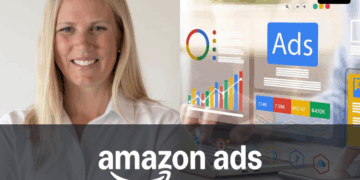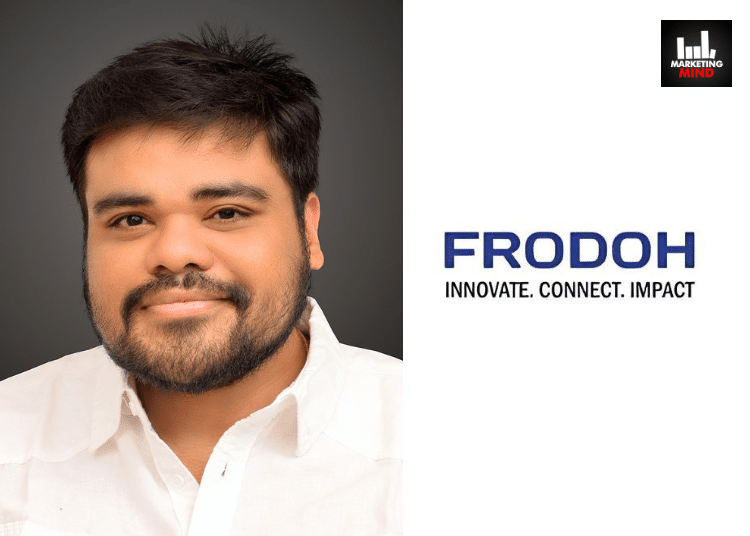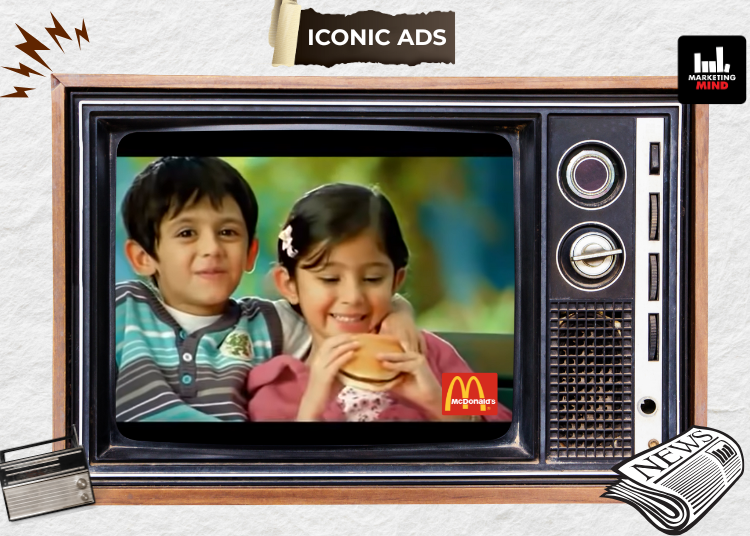India’s connected TV (CTV) advertising landscape is experiencing significant growth, with the number of active devices expected to reach 42 to 46 million by the end of the year, with the possibility of exceeding 50 million, Russhabh R Thakkar, Founder and CEO of Frodoh World, said.
He underscored that this growth is accompanied by a rise in TV consumption, as viewers increasingly enjoy the more immersive and relaxing experience of long-form content.
In a conversation with Marketing Mind, Thakkar explained, “This preference for extended formats, which provide a superior audiovisual experience, is evident as viewers are more inclined to engage with ads. The familiarity of TV advertising, coupled with the prevalence of ads on platforms like YouTube TV, underscores this trend. Additionally, AVOD audiences are expanding, and OTT platforms are responding by continuously delivering engaging content to keep viewers connected.”
He pointed out that the rise of CTV penetration in the Indian market can be largely attributed to increased internet access, alongside the growing affordability of TVs. With smart TVs now available from as low as Rs 12,000, and high-end models reaching Rs 20,000 to Rs 10 lakh, televisions are becoming both affordable and a sought-after experience for consumers.
“The awareness surrounding digital platforms is also expanding, as more people understand that major events like the IPL are being streamed on JioCinema and the World Cup on Disney+ Hotstar. With this, audiences across different markets are realising the advantages of streaming, especially with multilingual content and access to various events, such as the Olympics, where viewers can seamlessly switch between different sports. This evolution is driven by the collaborative efforts of manufacturers, OEMs, OTT platforms, and internet penetration, all of which are fueling the growth of CTV advertising,” Thakkar stated.
While briefly narrating the story behind the launch of Frodoh World and its evolution since its inception, he said, “Our platform is continuously evolving, with daily updates enhancing its capabilities. For example, we recently introduced two new features, viewability and completion metrics. These features enable users to predict viewability rates and completion levels more accurately.”
Reflecting on his background, Thakkar elaborated that he previously worked as a Media Planner at a leading digital agency. This role provided him with extensive experience across different categories and digital media expenditures. At that time, he observed a significant shift as many offline clients began transitioning to digital platforms, which was a valuable learning experience.
“In response to the need for more engaging advertising, we launched a company dedicated to creating interactive and immersive ad formats. Our focus was on developing ads that capture user attention and stand out from conventional banner and video ads. Initially, we charged based on cost per engagement, a model that proved effective as engagement scores were high. This was particularly significant during an era when click-through rates (CTR) were the primary measure of campaign success. Over time, while the market evolved, our offering remained a key element in clients’ media plans,” he said.
“Last year, as we ventured into the connected TV (CTV) space, we identified crucial trends in digital out-of-home, retail media, and CTV space. Recognising their significance, we anticipated their potential impact on the market. Our foresight and strategic investments have since proven advantageous,” he added.
Furthermore, he mentioned that currently, they are focused on developing their platform for TV and retail media. Their strategy involves integrating CTV purchases with retail media outreach and converting these engagements through digital media and out-of-home channels. This cohesive approach is generating significant excitement among their clients.
While explaining the ways in which Frodoh World tailors its audience solutions to cater to the diverse needs to various sectors within the CTV advertising space, he explained that when one switches on a CTV, the initial apps they encounter tend to be less fragmented compared to mobile devices, where numerous apps cater to a variety of functions. On a TV, one is likely to see familiar names like YouTube, a few prominent OTT platforms, and music services such as Amazon Music, JioSaavn, and Spotify.
“To address fragmentation, our approach differs from competitors. We have taken a proactive strategy by developing our own supply chain. We have partnered with over 196 OEMs and integrated with more than 46 OTT platforms, including several regional services. We also feature popular regional options, such as a prominent service in Gujarat, and other emerging platforms. This strategy ensures that viewers can find content that suits their preferences, even if it’s a bit delayed, like capitalising on the popularity of shows such as Mirzapur several months after their release,” he said.
Furthermore, he went on to say, “Our media strategy also takes into account that users often switch between platforms based on their viewing needs. For instance, a user might travel across OTTs. Recognising this, we plan our media strategy to accommodate these shifts and maximise engagement across different platforms.”
Thakkar pointed out that when it comes to advertisers, they generally do not see CTV as a challenge, as they are already accustomed to TV and YouTube advertising. So, it’s a natural progression for them to leverage CTV to reach users. However, the current challenge lies in raising awareness about CTV’s potential. Many digitally savvy audiences try to engage with traditional linear TV.
“Brands, whether digital-first or traditional with new digital products, need to reach people like us through platforms like YouTube or OTT, as that’s where we consume content. With the rise in cord-shavers, along with the growth of FAST channels, advertisers must understand why CTV is being viewed as the next major platform. Advertisers have long recognised that the bigger the screen, the greater the impact,” he said.
Furthermore, he highlighted that when advertising on FAST channels, advertisers can leverage these platforms during a launch campaign, especially when targeting a slightly older household audience. For instance, individuals aged 45 and above may still prefer navigating. FAST channels offer easy access with just the click of a button, replicating the familiar TV feed.
“Many in this demographic are accustomed to watching shows at specific times. This is where FAST channels come into play, catering to viewers who still engage with traditional channel switching. This mature audience is more likely to engage with these platforms, unlike younger generations who might be more focused on rapid wealth-building strategies. Thus, advertisers targeting this demographic naturally opt for FAST channels. The viewership numbers of FAST channels are steadily increasing,” Thakkar added.
On being asked, with the increasing CTV usage among millennials and GenZ, what strategies should media planners prioritise to effectively leverage the opportunities presented by this demographic shift, he said, “When you tune into any general entertainment channel (GEC) today, you won’t come across ads from platforms like digital-first brands. This is because digital-first advertisers have a clear understanding of where their audience is consuming content. Media planners have recognised a major shift in audience behaviour, with more viewers now using CTV.”
“These are tech-savvy individuals who make quick transactions, order food online, use media apps, or purchase subscriptions. They are no longer relying on linear TV. Even secondary devices in homes are often connected via Fire Stick or cloud TV. Planners have acknowledged this significant change in content consumption and are now focusing on engaging audiences when they are most immersed,” he added.
Thakkar also explained how artificial intelligence (AI) is transforming the targeting and personalization of CTV ads today. He explained that AI gives a fresh perspective on how to target audiences- some might align well with specific content, while others might not.
“For instance, a client might assume their digital audience only includes those interested in organic food. However, AI might suggest an unexpected audience that initially seems irrelevant but could turn out to be highly effective. Experimenting with targeting offers new insights into what may work, leveraging historical data to predict outcomes within a category. This is how we integrate our technology to enhance results,” he added.
Thakkar concluded by outlining key milestones that Frodoh World aims to achieve in the coming years, emphasising, “Our top priority this year is launching our retail media CTV platform as soon as possible. After that, we aim to continue developing the SSP side of our business. Additionally, we are focused on building a fantastic team of top talent to provide exceptional service to all advertisers in the market. By the end of March 2025, our goal is to establish a presence with every major advertiser across all categories.”
















